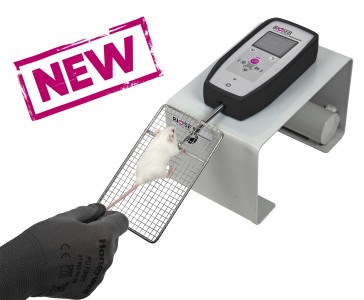Authors
EJ Drobyshev, ND Solovyev, BM Gorokhovskiy, VA Kashuro
Lab
Institut für Ernährungswissenschaft Universität Potsdam, Germany
Journal
Biological Trace Element Research
Abstract
Although aluminum chronic neurotoxicity is well documented, there are no well-established experimental protocols of Al exposure. In the current study, toxic effects of sub-chronic Al exposure have been evaluated in outbreed male rats (gastrointestinal administration). Forty animals were used: 10 were administered with AlCl3 water solution (2 mg/kg Al per day) for 1 month, 10 received the same concentration of AlCl3 for 3 month, and 20 (10 per observation period) saline as control. After 30 and 90 days, the animals underwent behavioral tests: open field, passive avoidance, extrapolation escape task, and grip strength. At the end of the study, the blood, liver, kidney, and brain were excised for analytical and morphological studies. The Al content was measured by inductively coupled plasma mass-spectrometry. Essential trace elementsCo, Cr, Cu, Fe, Mg, Mn, Mo, Se, and Znwere measured in whole blood samples. Although no morphological changes were observed in the brain, liver, or kidney for both exposure terms, dose-dependent Al accumulation and behavioral differences (increased locomotor activity after 30 days) between treatment and control groups were indicated. Moreover, for 30 days exposure, strong positive correlation between Al content in the brain and blood for individual animals was established, which surprisingly disappeared by the third month. This may indicate neural barrier adaptation to the Al exposure or the saturation of Al transport into the brain. Notably, we could not see a clear neurodegeneration process after rather prolonged sub-chronic Al exposure, so probably longer exposure periods are required.
BIOSEB Instruments Used
Grip strength test (BIO-GS3)
Source :

 Pain - Thermal Allodynia / Hyperalgesia
Pain - Thermal Allodynia / Hyperalgesia Pain - Spontaneous Pain - Postural Deficit
Pain - Spontaneous Pain - Postural Deficit Pain - Mechanical Allodynia / Hyperalgesia
Pain - Mechanical Allodynia / Hyperalgesia Learning/Memory - Attention - Addiction
Learning/Memory - Attention - Addiction Physiology & Respiratory Research
Physiology & Respiratory Research











![Dynamic Weight Bearing 2.0 – Postural Module [Add-on]](https://bioseb.com/733-home_default/dynamic-weight-bearing-20-add-on-postural-module.jpg)
























 Pain
Pain Central Nervous System (CNS)
Central Nervous System (CNS) Neurodegeneration
Neurodegeneration Sensory system
Sensory system Motor control
Motor control Mood Disorders
Mood Disorders Other disorders
Other disorders Muscular system
Muscular system Joints
Joints Metabolism
Metabolism Cross-disciplinary subjects
Cross-disciplinary subjects CONFERENCES & MEETINGS
CONFERENCES & MEETINGS 